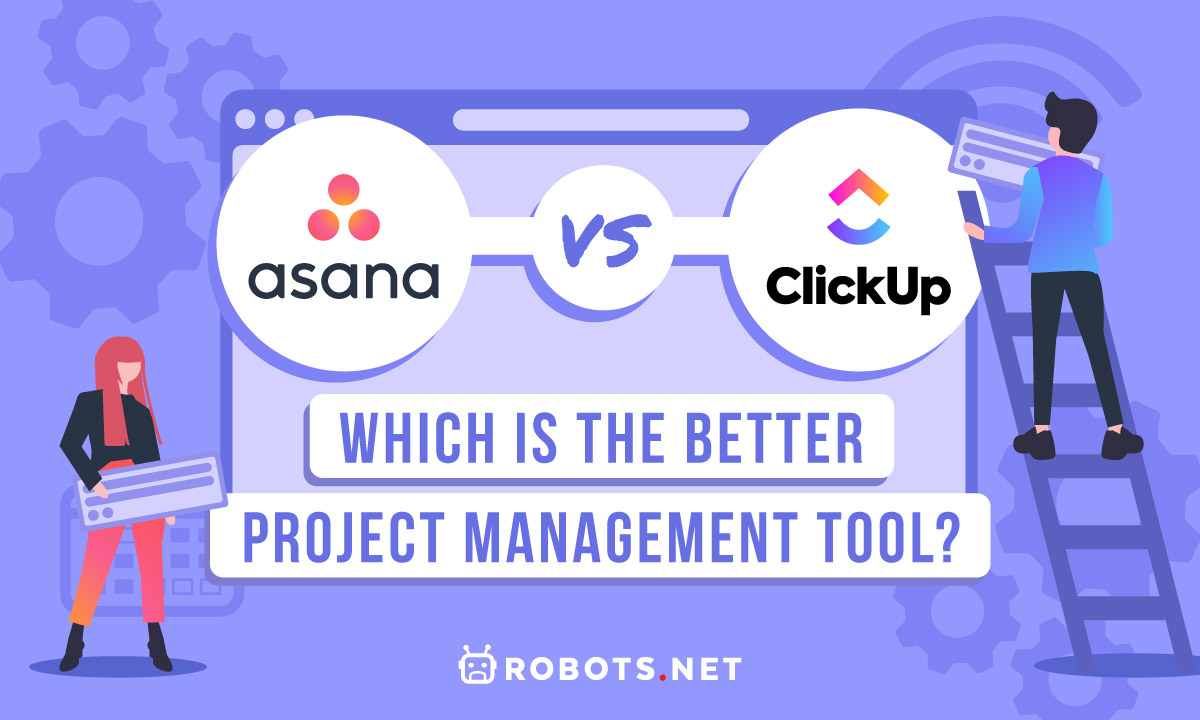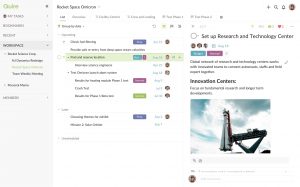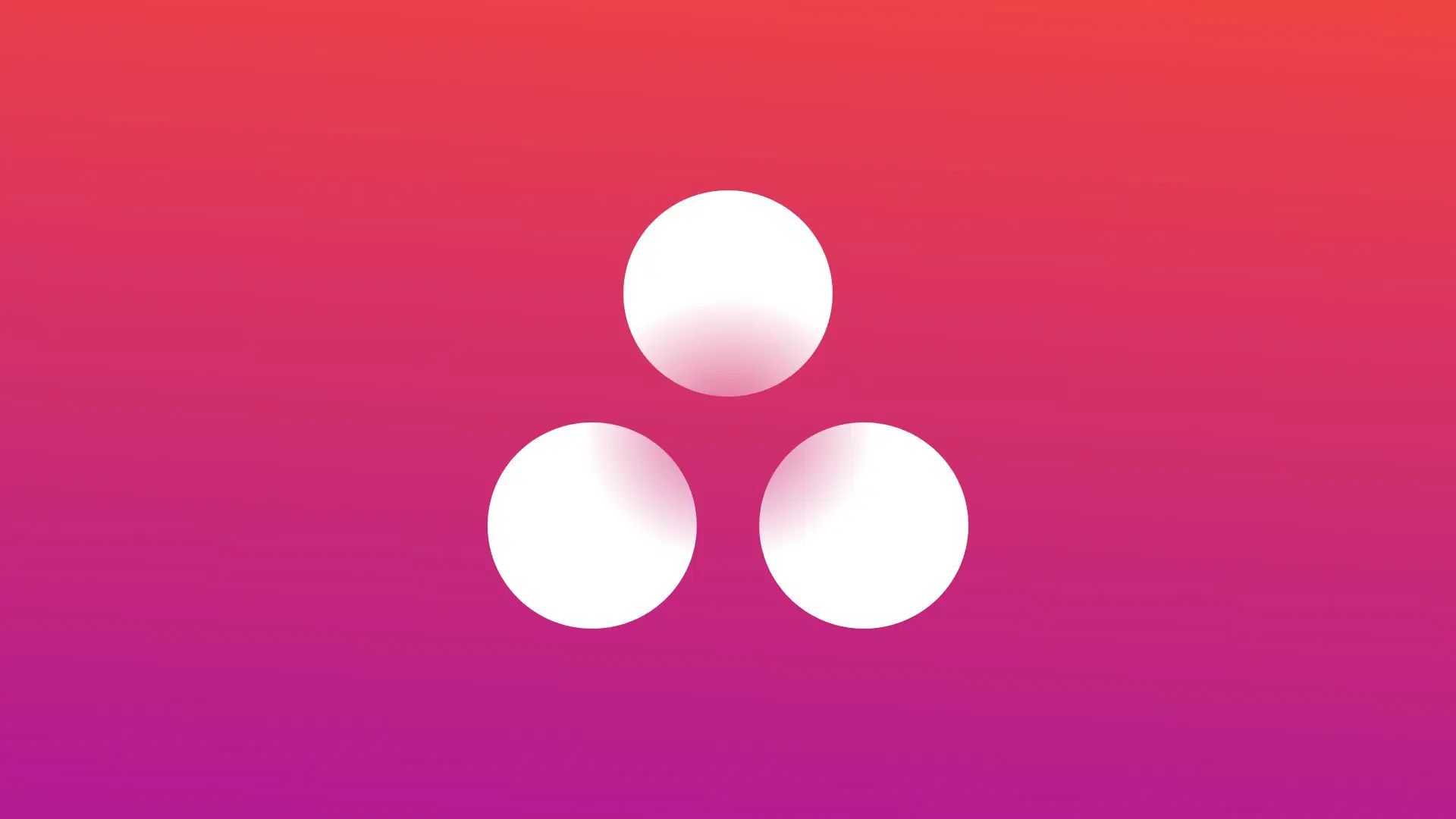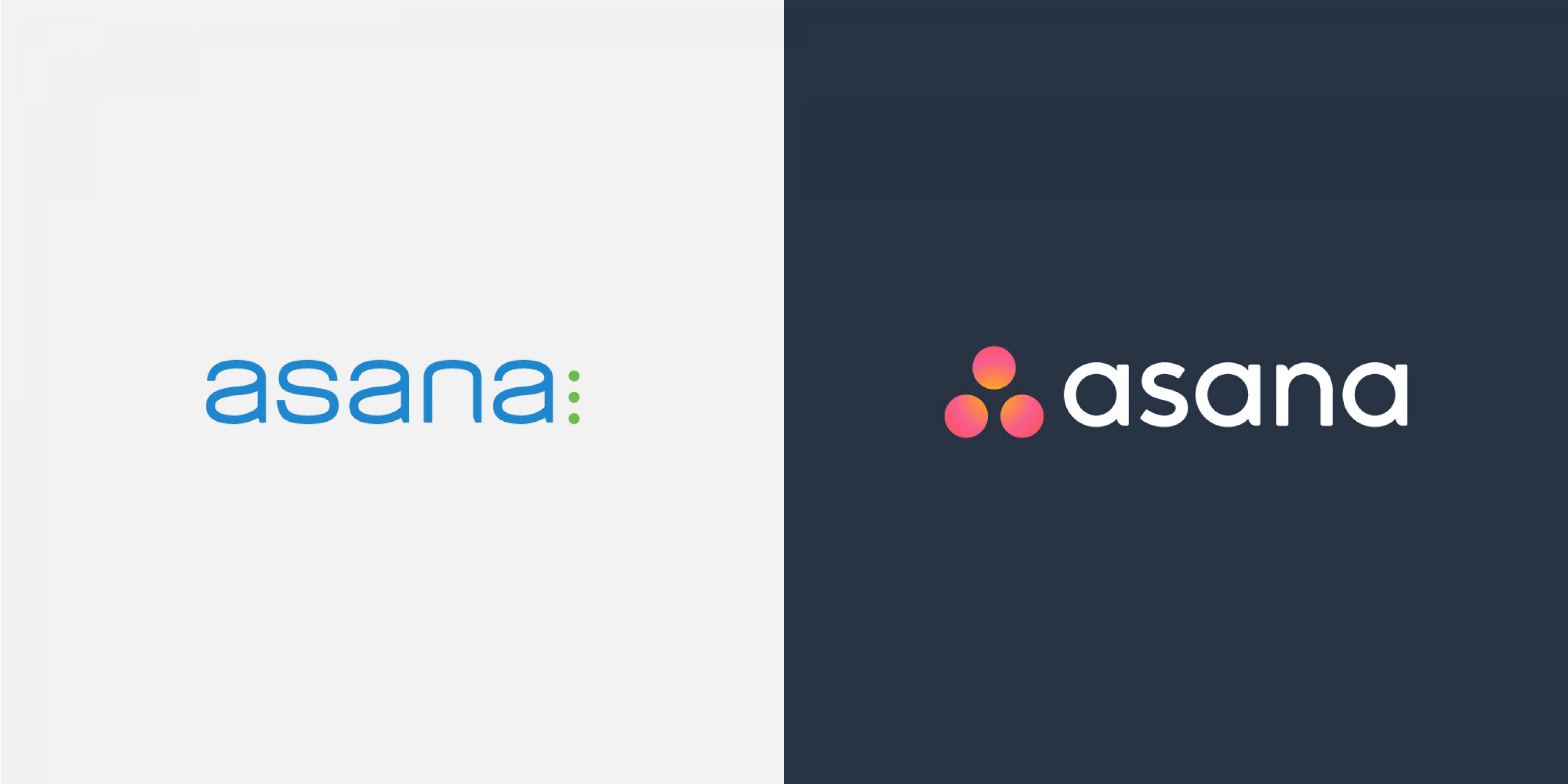There are tons of determining factors that contribute to productivity in the workplace. One of which is how well you organize tasks and assignments to run everything smoothly. That’s why companies turn to project management tools to do the job and streamline the process. However, it’s not always easy to decide on a tool especially if you’re unfamiliar with the existing products.
In this article, we’re comparing two of the best project management tools available: Asana vs ClickUp. Between Asana and ClickUp, which is the better tool? Let’s find out.
What Is Asana?
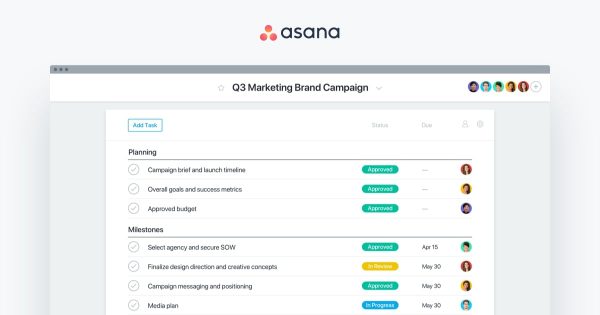

If you’ve ever worked on a team then you’d know how chaotic and confusing things can be. Companies and even smaller teams may tackle multiple projects with each requiring teammates to fulfill a hundred different tasks. How can you hope to be productive and organized amidst all this chaos? Through a project management tool like Asana.
Asana is an advanced project management tool that provides collaboration, organization, and task management tools to teams. It’s easy to use and intuitive, making it a compelling tool for small to large groups regardless of tech-savviness.
Furthermore, what sets Asana apart from other project management tools is its vast integration. It has over 100 links with other platforms including Gmail, DropBox, Slack, and more. With it, your company can focus on hitting your goals without being bogged down by project organization or app compatibility.
Lastly, Asana has built a stunning reputation over the years. Hence, it’s unsurprising why big names such as Tesco, RedBull, and The New York Times use the software.
What Is ClickUp?
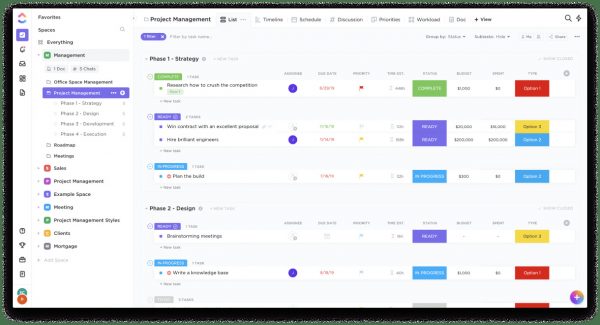

Asana may be a bigshot in the industry, but that doesn’t mean it’s the only good option in the business. ClickUp is also one of the world’s best despite being relatively newer. The software, much like Asana, focuses on providing robust project management tools all in one platform. This allows teams to simplify chaotic work environments and streamline their workflow.
Of course, offering traditional project management features isn’t enough to make it in the industry. What is ClickUp’s key differentiating feature that makes it a worthwhile competitor? One key factor that makes it more compelling than Asana and other tools like it is pricing. ClickUp is much more affordable so it’s great for startups and smaller teams.
Furthermore, ClickUp has more convenient features and a free version with unlimited tasks and users. It’s also more inviting to new users because it has a 30-day refund policy that Asana (and many others) lack. Lastly, its customer support is superb compared to alternatives.
However, despite these upsides, it also has its downsides which is that it’s less full-featured. We’ll dive into the key features – and the differences – between the two later. For now, just know that ClickUp is newer, less advanced, but is more affordable and has tons of potential.
Asana vs ClickUp: Feature Comparison
ClickUp and Asana have different pros and cons. With that said, let’s dive into all the details of the comparisons between ClickUp vs Asana. A product’s features are usually the key determinant for whether or not a customer makes a purchase. As such, it’s important to see how the features compare between ClickUp vs. Asana. Let’s look at each project management tool and find out what you can get with each.
ClickUp’s Features
Process Management Features
Organizing and streamlining workflows through to-do lists and compartmentalizing projects is one of ClickUp’s key highlights. They make this work through multiple software features, listed as follows:
- Goals. This feature allows the team to set a project goal while providing a dashboard for monitoring its advancement. It also shows the team and its members which tasks have been completed.
- Multiple Assigned Users. This feature allows the team to assign multiple users to a task.
- Recurring Checklists and Checklist Templates. Checklists are one of the most important parts of project management. As such, ClickUp allows users to save created checklists as templates to reuse them for later projects. Moreover, you can also create recurring checklists for tasks that need to be done multiple times.
- Custom Statuses. ClickUp also allows you to set custom statuses instead of confining you to standard status names. This lets industry professionals use the company or industry-specific terminology as they please.
- Task Dependencies. This feature allows ClickUp users to set up prerequisites for tasks that require it. Through it, you can view a task’s links and prerequisites and locate bottlenecks in the process.
- Reminders. This allows you to set notifications so your team and its users stay on schedule.
- Resolve Comments. Comments on specific tasks can be marked as “resolved” if they call for a specific action.
- Workload Charts. This feature allows you to manage each team member’s workload so that they’re neither over nor underloaded.
Task and Time Management Features
In addition to process management, ClickUp also boasts numerous time and task management features. Its most notable task management features include reordering checklists and multiple views.
The former allows users to reorder tasks through drag-and-drop for rearranging priorities. As for the latter, it simply means you’re able to view pending tasks through multiple layouts. Some of these include box, board, calendar, list, and Gantt Chart mode.
As for time management, ClickUp delivers the necessary features any team would need to manage their time well. These include setting deadlines, marking them as finished, syncing calendars, scheduling task start dates, and establishing timelines and estimates.
Collaboration, Reporting, and Integration Features
One of the best things about ClickUp is that each change you make is synced across all devices. As a result, it enables teams to edit projects and collaborate on tasks in real-time. All the changes made, whether by you or your co-workers, should reflect little latency. This is integral especially during times when people have no choice but to work from home.
Furthermore, teams can also add new collaborators or tag individual users to comments and tasks. This is key to getting the work and any required edits accomplished by the correct team member. On the flip side, you can also provide guests and clients access to your tasks, lists, and projects. Of course, this will be limited and you can adjust the privacy and permission settings as you please.
As for reporting, ClickUp offers a handy project overview so team members can see the project’s big picture. Moreover, each member can see a summary of the project’s process percentage and what the team is currently working on.
Lastly, while ClickUp does have many collaborative features, it can also integrate with various third-party apps and software. The most notable ones include Slack, Chrome, Google Drive, Outlook, DropBox, YouTube, Zoom, Zendesk, and GitHub. However, it can also integrate with a few less common software including Bitbucket, Gitlab, Zapier, and Vimeo.
ClickUp can even integrate with time tracking apps like Promodone, Timely, etc. What’s more, it can also import your data from other project management apps including Trello, Todoist, and even Asana.
Asana’s Features
Basic Project Management Features
With all that said, which of the two wins when it comes to a battle between Asana vs ClickUp? Surely ClickUp has the upper hand because of its well-rounded features, right? There are pros and cons to both and each one won’t fail you when it comes to basic project management. That’s because like ClickUp, Asana also offers most of the basic features your team might need.
One of these includes digital “pinboards” that allow you to visualize your project’s current status. As a result, you can see an overview of the project, outstanding tasks, and which projects are still in progress. Moreover, the software also offers handy automation tools that streamline the process and are great time-savers for large projects.
Timeline Feature
Creating a proper timeline is foundational to finishing any project, big or small. That’s why Asana sought to provide users with the ability to create or import timelines. You can do this by starting one from scratch through the software or uploading a CSV file into the system.
Regardless, the timeline created should be shareable and editable for you and your team. Moreover, you should be able to input the start and end dates for each task. Your team can also allocate tasks to designated users for better efficiency and productivity.
Portfolios Feature
Having timelines is great for tracking different projects and staying on schedule. However, it’s not quite enough for managing the big picture. As a result, Asana strove to create its Portfolios feature – a place where you can track all your team’s initiatives. Within Portfolios, you can see all the start dates, deadlines, project status, priority, and processes for outstanding tasks.
In addition to tracking, you can also group projects in one portfolio – handy for more complex systems and workflows. You can also track the real-time progress for each project through this feature. Lastly, you and your team can conveniently share the portfolios you create with investors, clients, and whoever else is concerned.
Workload Management and Forms Features
Overloading or underloading team members can be a recipe for disaster, hindering your project’s overall progress and completion. That’s why Asana also has a handy workload management feature that helps you allocate work equally to team members.
However, it’s not just based on the amount of work assigned to each user. Asana also tracks the timeline and sees which dates they’re busiest and most free. This helps project managers know not only who to allocate tasks to but also when. If you misallocate some tasks, you can simply reassign them through Asana’s intuitive drag-and-drop feature.
In addition, project managers can also assign priorities to each task. Those with higher priority will have higher “points” or the number of hours needed to finish. Asana will then calculate your project based on all of these factors, including the workload, and help you organize.
As for the Forms, Asana allows teams to use forms to organize work requests. Through it, you can organize new tasks and customize their setup for easy allocation. Forms are also great for requesting help in case a task is too heavy for certain members. Moreover, you don’t have to create them from scratch because Asana has numerous templates including work, creative, and IT requests.
Asana Integrations
If we’re comparing Asana vs ClickUp, one of the biggest differentiators of the two is the integrations each has. Sure, they can both integrate with numerous third-party apps and software. However, the apps they integrate with are mostly different.
As a result, you may want to consider integrations if you’re dependent on certain third-party apps. For example, Asana can work with Adobe Creative Cloud while ClickUp cannot. If you’re mainly a creative company then this is certainly worth noting.
With that said, the following apps are Asana’s main third-party integrations:
- Adobe Creative Cloud
- GitHub, Bitbucket, and Gitlab
- Gmail
- Jira Cloud
- Office 365
- Salesforce
- Slack
- Tableau
- Time Trackers (Pomodone, TSheets, TImely, and more)
- Zapier
Asana vs ClickUp: Pricing & Packages


Overview
| Plans | Asana’s Price | ClickUp’s Price |
|---|---|---|
| Free Plan | – | – |
| Premium Plan (Asana) /
Unlimited Plan (ClickUp) |
$11.59 per member monthly
$9.40 per member annually |
$9 per member monthly
$5 per member annually |
| Business Plan | $25.69 per member monthly
$20.99 per member annually |
$19 per member monthly
$9 per member annually |
| Enterprise Plan | Custom Pricing | Custom Pricing |
Asana vs ClickUp: Free Plans
Based on the overview, there’s no contest for which product has the advantage between Asana vs ClickUp. ClickUp is more affordable across the board. However, both programs have free plans that level the playing field a bit. Which one is the better option for those who are just starting project management? Let’s find out.
Firstly, with ClickUp, you’re getting a lot of perks for free. That’s because it provides an unlimited number of tasks and users so you can go crazy with project management. You’re not confined by numbers unlike Asana, which limits you to 15 members.
However, ClickUp does have limitations and the biggest one is its free storage. It only provides up to 100 MB of space for file uploading which is not a lot. Hence, you might have to find an external storage solution if you want to stick to the free plan. In addition, ClickUp doesn’t offer access to permissions in the free plan so there are no privacy settings at all. What’s more, each portfolio, goal, and dashboard is confined to 100 uses.
As for Asana, you’re limited in the things you can do in the program because there’s less project visibility. However, it does provide basic features such as setting tasks, displaying them on boards, lists, and calendars. Moreover, you can assign tasks to users and set deadlines.
Asana vs ClickUp: Premium and Unlimited Plans
Now, let’s compare Asana vs ClickUp in terms of their most affordable paid plans. These are called “Unlimited Plan” (ClickUp) and “Premium Plan” (Asana). We’ll discuss each in detail starting with the former.
If you want unlimited storage on ClickUp, then upgrading to its Unlimited Plan is the way to go. This not only provides limitless storage but also unlocks numerous features. These include allowing read-only access to five guests, 1,000 monthly automation, limitless portfolios, forms, and goals.
Moreover, it allows you to create reports, access cloud storage, set reminders, and add recurring tasks. It also provides an overview of today’s activities and pulse overviews (showing online members, their current tasks, and work performed).
As for Asana, the Premium Plan unlocks many features the free version lacked. These include a timeline, better search and reports access, custom fields, and unlimited guests. It also provides rule automation, forms, setting milestones (for progress tracking), and admin consoles.
Lastly, the Premium Plan allows you to set up private teams, projects and provides priority access to Asana’s support team. With that said, you can move much more freely using Asana’s Premium Plan and fully manage projects.
Asana vs ClickUp: Business Plans
ClickUp
ClickUp’s Business Plan includes all of the Unlimited Plan’s benefits plus more advanced features. Some of these include two-factor authentication and Google single sign-on for improved security. It also grants the following upgrades to your standard system:
- Monthly automation is upgraded to 10,000
- Inclusion of personalized and branded forms
- Portfolio permissions settings
- Access to history in the live overview
- Goal folders
- Custom exporting
- Workload management
- Multiple views including default, protected, and private
Asana
Asana’s Business Plan is much more expensive than ClickUp’s but offers more advanced features than the Premium Plan. With this upgrade, you’ll gain the following features:
- Access to portfolios
- Workload viewing
- Personalized rule creation
- Approval feature for tasks and projects that require approval from higher-ups
- Custom field locking
- Proofing
- Integration with more robust Asana partners including Salesforce, Power BI, Adobe Creative Cloud, and Tableau
Asana vs ClickUp: Enterprise Plans
It’s not truly fair to compare Asana vs ClickUp in terms of their Enterprise Plans. That’s because there’s no set price for either and each company has to ask for a custom quotation each time. Hence, it’s better to get a quotation from both and compare the price of either one before you decide.
Nonetheless, for both Asana and ClickUp, the Enterprise Plans are the highest tier plans you’ll access. Therefore, these will unlock all of the softwares’ highest-end features. Let’s compare Asana vs ClickUp and see what each tool’s highest plans have to offer.
For ClickUp, the biggest draw to the Enterprise Plan is certainly its privacy features. For example, you’ll gain access to features like HIPAA compliance, Microsoft, Custom SAML, and Okta Single Sign-On. It even lets you grant custom permissions for each member, administrator, and client/guest. Furthermore, you can limit public sharing and also choose which team members can add guests. Lastly, ClickUp’s high-end plan also lets you use API to add or subtract users.
Of course, ClickUp also adds non-privacy-related features to its Enterprise Plan. For instance, it upgrades your monthly automation from 10,000 to 100,000. Moreover, you’ll be the top priority in customer support and you’ll even get a specialized customer success manager. It’s the ideal solution for large enterprises as well because it’s also inclusive of onboarding and training.
As for Asana, the main benefit to upgrading is its high-end features. These include custom branding, provisioning, and de-provisioning users, SAML, blocking native integrations, and data exportation and erasure. Like ClickUp, Asana also adds you to the list of priority clients when it comes to customer service support.
Which Project Management Tool Is Better?
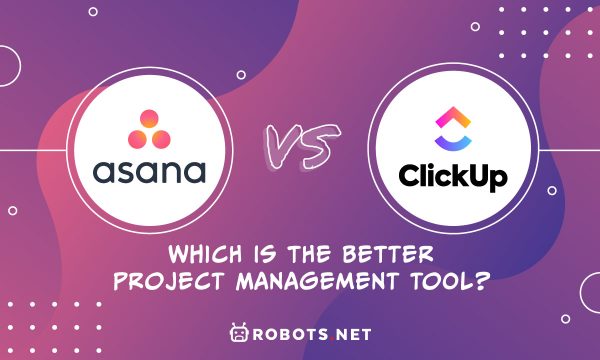

Is ClickUp any good? Does it have everything you need for project management? On the other hand, is Asana the better option? When comparing ClickUp vs Asana – whether in 2021 or 2022 – it’s important to examine your company’s needs.
Firstly, both Asana and ClickUp have similar sets of features. Each one provides the most basic project management tools and has roughly similar scopes. With that said, however, ClickUp might just have an edge over Asana if the price is your main concern.
Sure, Asana has a free plan but its features are very limited. If you upgrade, ClickUp certainly has the advantage in the battle between Asana vs ClickUp in terms of sheer affordability. In addition, ClickUp is also constantly innovating and adding new tools. You might get more bang for your buck through the software in the long term if you’re patient. Lastly, ClickUp has better reachability in terms of customer support because it has a direct email and chat feature.
Nonetheless, if your company is large enough and needs more advanced automation, then we recommend Asana. It will have more robust tools for larger enterprises – all of which are crucial for more complex projects.
Alternatives to Asana and ClickUp
Is there something better than Asana or ClickUp that you might want to consider? Of course, these two project management tools might be top-of-the-line, but that doesn’t mean they’re the best for all companies. So, is there something better than Asana and ClickUp? Let’s examine a few alternatives.
Trello
ClickUp vs Asana vs Trello: which of the three is better? Trello is a bit different from the other two in that it’s web-based and is more collaborative. It uses the Kanban-style, a visualization tactic that follows a set three-tier workflow. The app is great for small teams and freelancers who don’t need advanced features.
Monday
If you want a project management tool that’s lightweight and simple then we recommend Monday. All you’ll need is an account, a template, and you’re pretty much set. Afterward, you can fill in all the details including all the necessary projects and tasks your team needs. It’s a straightforward app that’s a great alternative to either.
With that said, however, which one would win in a battle between ClickUp vs Asana vs Monday? Well, that depends. Asana is still the more robust option as Monday lacks some basic features including multiple projects, tracking milestones, etc. Nonetheless, it’s a decent and affordable tool if you’re looking for a more user-friendly alternative.
Notion
Can’t decide between Asana vs ClickUp? Perhaps you’d like a third option that’s just as popular albeit with a slightly different focus. With Notion, you can forego other apps because it lets you plan, collaborate, organize, and write the majority of things. You can manage projects, add tasks, plan notes, and more. Is ClickUp better than Notion in terms of project management? Perhaps in certain ways. Nonetheless, Notion is free and cloud-based so it has an edge.
Todoist
The size of your team is an important consideration when deciding between Asana vs ClickUp. That’s because Asana is better catered to larger enterprises while ClickUp is more suited to smaller teams. However, if ClickUp isn’t fit for your small company, then we recommend trying Todoist.
Like ClickUp, it acts as a collaboration and project management tool. You can create and plan projects, list tasks, delegate them, and collaborate on files. However, Todoist primarily lets you track or monitor projects and tasks whereas ClickUp is a more holistic application. With that said, is ClickUp better than Todoist?
Asana vs ClickUp: The Final Word
In the battle between Asana vs ClickUp, there’s truly no real winner. Click Up is the better option for folks who want to keep things affordable without sacrificing quality. However, larger enterprises that can afford it will benefit from Asana’s more high-end automation features.
With that said, it all comes down to your company’s needs. If you’re having trouble deciding, we recommend signing up for either one’s free plans first before making a purchase.







